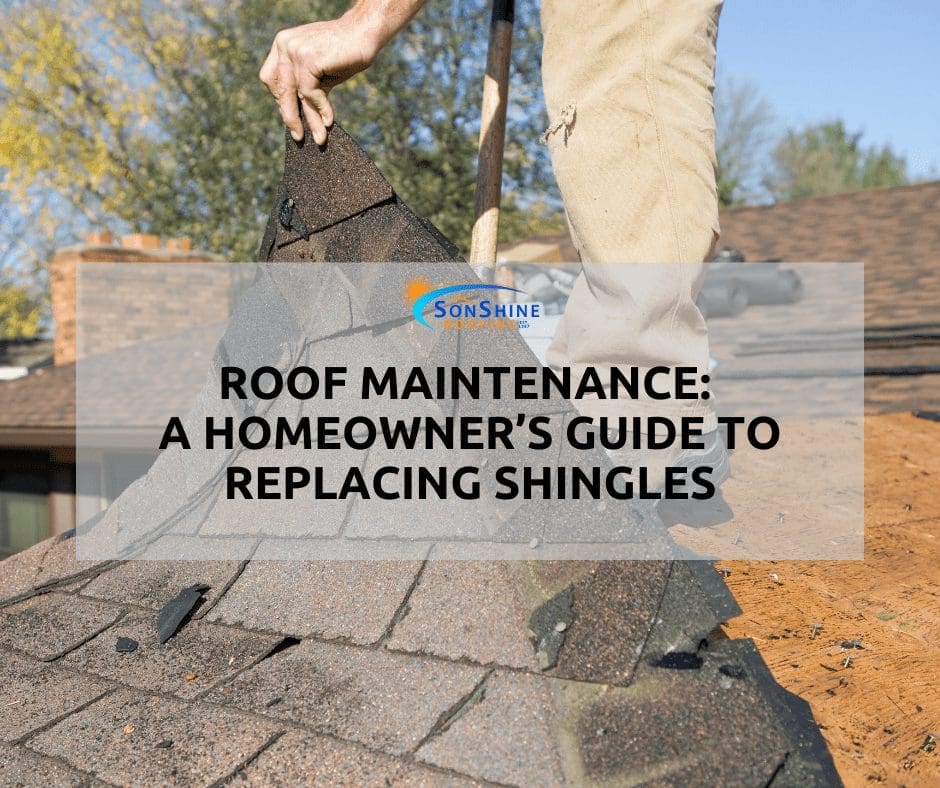You can expect your shingle roof to last about 20 years. However, you need to keep your roof in good repair with regular maintenance, which may mean replacing shingles.
One way you can maintain your roof is by repairing the loose or damaged shingles. All of your shingles must stay secure in their intended place for your roof to work properly and provide the maximum amount of protection.
Replacing shingles is relatively straightforward, so follow this guide, and let’s get your roof into tip-top shape.
Before You Get Started
Any time that you climb up on the roof, you need to think about safety. Never do work on your roof when you are home alone. An accident can happen quickly, and you need someone around who can assist you.
Wear heavy-duty work gloves and sturdy soled boots. This will ensure you have enough grip to keep yourself steady while you’re working.
To get on your roof, use a sturdy ladder that is on flat solid ground. Have your helper secure the ladder at its base when getting on and off of the roof.
Remove the Seal
Start by locating and removing the shingle that you want to replace. If the shingle is already broken loose, then your job is easy. Grab the shingle, and get rid of it.
If the shingle is still intact, then you’ll need to break the bond and remove the nails holding it in place. There is a sealant that bonds the shingles to the adjacent ones.
While this sealant is super strong, you can pop it loose by carefully sliding a flat pry bar under the edge of your target shingle.
Keep in mind that the temperature and weather will affect how the sealant acts. If it’s hot out, then the sealant will be more gooey and challenging. If it’s cold out, then it’ll be more solidified and easier to sheer through.
Once you break free your target shingle, you’ll need to systematically break through the seals on the surrounding shingles. You need to be able to gently lift these shingles so you can get to the nails underneath.
Remove the Nails
Now that you have everything broken free, it’s time to gently lift the shingles and remove the nails. You need to be careful with this step as using your hammer to pry a nail out can cause damage to the granular upper surface of the shingle.
To prevent this damage from happening, aim to lift both the shingle and the nail at the same time. To do this, you’ll need access to the underside of your shingle.
Use your pry bar again to lift a corner of the shingle slowly. You should see the nail lifting with it. Work your way around the shingle to lift all of the nails.
Remove the Adjacent Nails
Once you remove all the nails from your target shingle, you aren’t finished. At this point, you’ll notice that you still can’t remove the shingle. That’s because the nails in the shingle above it are holding it in place by going through the top edge of your target shingle.
While this might be slightly annoying now, it’s an important design to ensure that each shingle is held in place by two rows of nails. It’s what strengthens your roof against wind damage.
You’ll need to repeat the seal bond-breaking process and nail removal on the shingles above your target shingle. You may find it easier to break the bond on the above two rows to give you easier access to the immediate above row’s nails.
Get Rid of the Old Shingle
Now that your target shingle is free from any attachments holding it in place, it’s time to slide it out. If your shingle is damaged, then throw it away and get your new shingle ready for the next step.
Don’t get too aggressive with this step; you don’t want to damage the shingles around your target on. The gritty texture is important to the proper function of your roof, so don’t scrape it off while you’re pulling the old shingle out.
Slide in the New Shingle
Prior to sliding in the new shingle, you will need to seal the holes from the nails. Using a high-quality shingle sealant, like plastic roof cement to do this.
Make sure that your new shingle is the same size as your old one. This will make sliding it into place much easier. You need to carefully slide it into place without causing damage to it or the surrounding shingles.
Secure and Reseal
Start by nailing it down. Then work your way out to the surrounding overlying shingles.
When you’re done with the nails, you’ll need to move on to the sealant. If you live somewhere warm, then your new shingle will seal itself to the older shingles. The best thing to do is use some of the plastic roof cement to make them seal faster.
All you need to do is apply three small dots of your asphalt plastic roof cement to the tabs on your shingle. Make sure you apply cement in equal distances and spread throughout the length of the shingle.
Make sure it’s secured by pressing down on the shingle. Then move on to the surrounding shingles that have broken seals.
Replacing Shingles: Let the Pros Help
We understand that just because you can do a DIY project, doesn’t mean that you want to do it. Whether you just don’t have the time or desire to climb up on your roof for replacing shingles, we’re here for you. Our experienced team will take the time to repair your shingle and inspect the rest of the roof for any potential issues.
Contact our team today and let us quote your roof repair today.





0 Comments